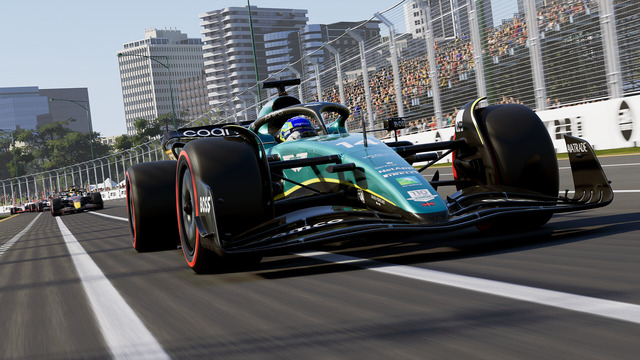F1 23- Best Singapore Custom Setup
 Preparing for the Singapore Grand Prix is no easy feat for F1 23 teams. With the challenging Marina Bay Street Circuit, drivers and engineers must ensure their cars have the right setup to conquer the track. From managing high temperatures to car balance, every detail counts. In this blog post, we will explore the key setup aspects of F1 teams during the Singapore Grand Prix to help you understand how they optimize their aerodynamics, transmission, suspension, and brakes to perform at their best.
Preparing for the Singapore Grand Prix is no easy feat for F1 23 teams. With the challenging Marina Bay Street Circuit, drivers and engineers must ensure their cars have the right setup to conquer the track. From managing high temperatures to car balance, every detail counts. In this blog post, we will explore the key setup aspects of F1 teams during the Singapore Grand Prix to help you understand how they optimize their aerodynamics, transmission, suspension, and brakes to perform at their best.
Singapore Custom Setup For F1 23
Aerodynamics Setup
- Front Wing Aero: 47
- Rear Wing Aero: 45
The first thing F1 teams consider when preparing for the Singapore Grand Prix is their aerodynamics setup. The Marina Bay track is a street circuit with tight corners, so teams must optimize the car’s downforce to maximize cornering speed while ensuring that the car is not too slow on the straights. For the front-wing aero setup, teams usually set it to 47, while the rear-wing is set to 45.
Transmission Setup
- Differential Adjustment On Throttle: 56
- Differential Adjustment Off Throttle: 53
Another important aspect to consider is the transmission setup. Teams adjust their differential on the throttle to 56% and off the throttle to 53%. The differential settings are adjusted to ensure that the wheels do not lock up during braking and that there is maximum traction on the turns. The goal is to ensure smooth acceleration and deceleration of the car, allowing the driver to optimize their driving lines.
Suspension Geometry Setup
- Front Camber: -2.70
- Rear Camber: -1.0
- Front Toe-Out: 0.05
- Front Toe-In: 0.20
Suspension geometry is another critical component when preparing for the Singapore Grand Prix. The front camber is usually set to -2.70° while the rear is set to -1.00°. The front toe is set to 0.05°, and the rear camber is set to 0.20°. By optimizing the suspension geometry setup, teams aim to ensure maximum tire grip, especially when taking sharp corners.
Suspension Setup
- Front Suspension: 28
- Rear Suspension: 8
- Front Anti-Roll Bar: 5
- Rear Anti-Roll Bar: 1
- Front Ride Height: 33
- Rear Ride Height: 37
Suspension setup optimization goes hand-in-hand with the suspension geometry setup. The goal is to maintain car balance while minimizing the impacts of bumps and undulations on the track.
Brakes Setup
- Brake Pressure: 100
- Front Brake Bias: 55
Braking is one of the most critical components of F1 racing. In Singapore, teams face high braking temperatures due to the intense slowing down and acceleration associated with sharp turns and straights. Teams adjust their brake pressure to 100% to manage the high temperatures. They also set the front brake bias to 55% to ensure maximum grip of the front wheels during braking.
Tyres Setup
- Front Right Tyre Pressure: 22.6psi
- Front Left Tyre Pressure: 22.5psi
- Rear Right Tyre Pressure: 21.0psi
- Rear Left Tyre Pressure: 21.0psi
Tyre setup is crucial for optimizing a car’s performance during the Singapore Grand Prix. The high temperatures mean a risk of blistering, which can affect the car’s handling, making it hard to optimize driving lines. Teams set their front right tyre pressure at 22.6 psi, the front left at 22.5 psi, the rear right at 21.0 psi, and the rear left at 21.0 psi to manage heat and minimize the risk of tyre blistering.
Preparing for the Singapore Grand Prix is a complex process that involves multiple setup elements, including aerodynamics, transmission, suspension, brakes, and tyres. By optimizing these elements, F1 23 teams can ensure maximum car performance, allowing their drivers to push to the limit around the Marina Bay Street Circuit. From reducing the chances of blistering to minimizing the risk of wheel lock-ups, optimizing the car setup is critical to F1 racing success.
For more guides on F1 23, click on the descriptions below: